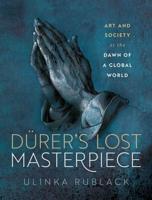Publisher's Synopsis
George Inness (1825-94), long considered one of America's greatest landscape painters, has yet to receive his full due from scholars and critics. A complicated artist and thinker, Inness painted stunningly beautiful, evocative views of the American countryside. Less interested in representing the details of a particular place than in rendering the "subjective mystery of nature," Inness believed that capturing the spirit or essence of a natural scene could point to a reality beyond the physical or, as Inness put it, "the reality of the unseen."
Throughout his career, Inness struggled to make visible what was invisible to the human eye by combining a deep interest in nineteenth-century scientific inquiry-including optics, psychology, physiology, and mathematics-with an idiosyncratic brand of mysticism. Rachael Ziady DeLue's George Inness and the Science of Landscape-the first in-depth examination of Inness's career to appear in several decades-demonstrates how the artistic, spiritual, and scientific aspects of Inness's art found expression in his masterful landscapes. In fact, Inness's practice was not merely shaped by his preoccupation with the nature and limits of human perception; he conceived of his labor as a science in its own right.
This lavishly illustrated work reveals Inness as profoundly invested in the science and philosophy of his time and illuminates the complex manner in which the fields of art and science intersected in nineteenth-century America. Long-awaited, this reevaluation of one of the major figures of nineteenth-century American art will prove to be a seminal text in the fields of art history and American studies.
Throughout his career, Inness struggled to make visible what was invisible to the human eye by combining a deep interest in nineteenth-century scientific inquiry-including optics, psychology, physiology, and mathematics-with an idiosyncratic brand of mysticism. Rachael Ziady DeLue's George Inness and the Science of Landscape-the first in-depth examination of Inness's career to appear in several decades-demonstrates how the artistic, spiritual, and scientific aspects of Inness's art found expression in his masterful landscapes. In fact, Inness's practice was not merely shaped by his preoccupation with the nature and limits of human perception; he conceived of his labor as a science in its own right.
This lavishly illustrated work reveals Inness as profoundly invested in the science and philosophy of his time and illuminates the complex manner in which the fields of art and science intersected in nineteenth-century America. Long-awaited, this reevaluation of one of the major figures of nineteenth-century American art will prove to be a seminal text in the fields of art history and American studies.









